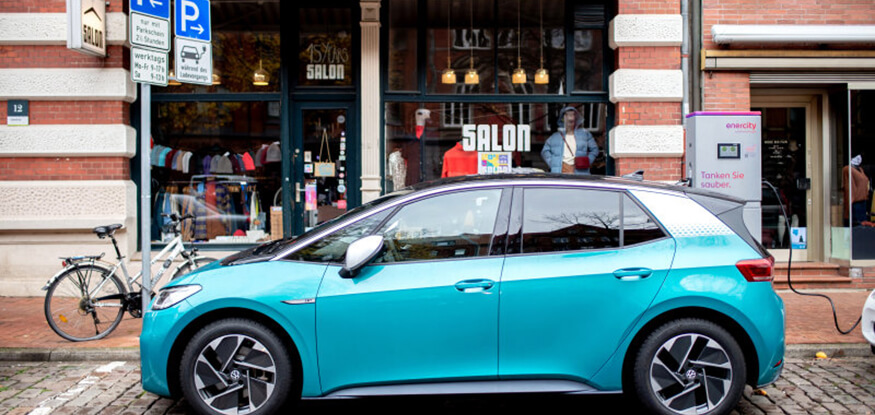Cities can be a key to a net-zero emissions future as digitalisation opens up a range of new opportunities. As per IEA’s Empowering Cities for a Net-Zero future report, urban transport accounts for 4 billion tonnes of CO2-eq, more than 40% of the transport sector’s total emissions. Urban mobility operators and authorities are constantly trying to find ways to make the transition of the transport sector from fossil-fuel to low-carbon modes. They are incorporating technology to integrate transport services that encourage commuters to use their cars less.
Moreover, the current volatility in the global oil & gas markets is prompting people to rethink their energy strategies. Governments are incentivizing businesses to become more energy efficient in a bid to lower carbon emissions. Many businesses have already committed to net-zero emissions by 2050 with substantial short-term targets by 2030.
The introduction of e-scooters and last mile-services changed city transportation immensely in a short time, but with a new introduction to the industry, the rules and regulations are ever-changing.
As such, e-mobility has witnessed greater popularity among the urban populace in the last 3 to 4 years; however, authorities have been struggling to come up with a stable regulation and policy to use them on a mass scale. Even in cities like Dubai, where the transport infrastructure is fairly advanced, seamless access to e-mobility options is only found in certain locations.
In the emirate, constant improvements concerning e-mobility are evolving. As part of the country’s Net-Zero by 2050 commitments, the Abu Dhabi Department of Energy recently released the regulatory policy for electric vehicle charging infrastructure in the emirate. The policy lays out the terms and conditions for setting up a network of electric vehicle charging stations across Abu Dhabi, which includes principles for ownership, installation, and management of Electric Vehicle Supply Equipment (EVSE), the electricity supply to EVSE, and the pricing mechanism to end customers.
Studies have shown that vehicles searching for parking spaces make up roughly 30% of all traffic in urban areas, contributing majorly to the pollution mix. As a solution for this overlooked concern, smart parking technology is helping drivers find available parking spaces more quickly and easily. Smart parking can reduce total emissions by more than 2%, which is a figure that is very difficult to achieve with any other single solution.
Looking at it from the logistical hubs and ports perspective, e-commerce companies such as Amazon are promising same-day and one-day deliveries to their customers. What such services warrant is seamless access to logistical data tracking vehicles and cargo ships supported by energy-efficient technologies. Modern ports are using smart containers powered by clean energy, using technologies such as in-row cooling, renewable energy, and efficient space allocation that will reduce Power Usage Effectiveness (PUE) by more than 20% and significantly reduce carbon emissions.
Similarly to reduce congestion and greenhouse gas emissions, Jakarta’s Smart City initiative combines public transport management and payment systems to facilitate a reliable, safe, and affordable rapid bus transit system. Under PT JakLingko Indonesia, this comprehensive integration process increased the number of Transjakarta commuters from about 400 000 per day in December 2017 to just over 1 million per day in February 2020.
Lithuania’s capital, Vilnius, launched the Vilnius Shared Mobility Hub, a so-called ‘mobility cluster’ aimed at reducing the number of cars in the city by boosting car sharing and alternative transport services.
Moreover, to reduce the carbon emission in transportation-related activities, the Mobility as a Service (MaaS) model is being viewed with great interest globally. MaaS is a user-centric framework that aims to deliver a portfolio of multi-modal mobility services by providing convenience to being multimodal and getting citizens away from using their private vehicles. MaaS is considered to reduce emissions along with other related issues such as congestion, air pollution, social exclusion, etc. Through such a system, a wide- range of mobility services is provided to customers by mobility operators. However, in light of the COVID19 scenario, the idea of MaaS may not seem a fitting proposition and many MaaS pilots have faced varying setbacks. We live in a world of big data. In time, adequate research and analysis of volumes of data from transport activities may ultimately lead us to a favourable conclusion for MaaS as a sustainable model upon which to base the future of urban mobility.
Cities are the fuel of the global economy. The government, policymakers and industry leaders must press on to adopt transportation solutions that can transform the energy consumption statistics by creating new synergies to reduce emissions, improve energy efficiency, enhance resilience and provide a cleaner prosperous future for its citizens. Strong international cooperation and collaboration can play a crucial role in this, particularly through emerging knowledge-sharing networks encompassing regional and geographical borders.
Also read: Saudi Aramco to roll out hydrogen-powered vehicles locally

